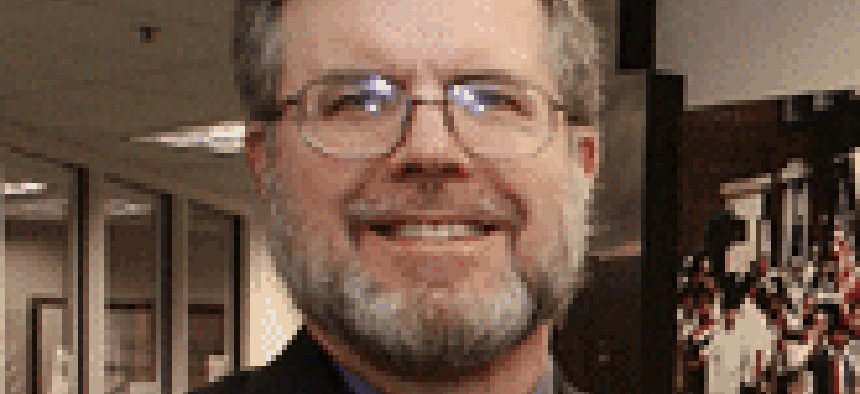Seven perspectives on where IT is or isn't heading this year


Connecting state and local government leaders
Will the government's use of Extensible Markup Language skyrocket this year? What new IT mandates are coming from Congress? Are radio-frequency identification tags all they're cracked up to be? How healthy are e-government projects?







gcn.com/forum
Gordon Eubanks
Oblix Inc.
Ross Altman
SeeBeyond Technology Corp.
Ben Shneiderman
University of Maryland
www.acm.org
Rep. Tom Davis
House of Representatives
G. Martin 'Marty' Wagner
General Services Administration
- Aligning agency investments to the Federal Enterprise Architecture
- Implementing OMB's privacy guide
- Continuing to focus on usability and accessibility
- Improving software asset management in agencies
- Bolstering cybersecurity, including identity management
- Finding more effective ways to work with industry
- Changing the government business process to do more at the governmentwide level instead of the agency level.
E-AUTHENTICATION PLAN: We have adopted a baseline architecture that will implement the new federated approach, and we have begun a pilot with three agencies to prove this model. We will then issue a revised architecture in the spring and be ready to make federated services more broadly available at the end of the summer.
Wagner is a veteran fed who has spent his career working in IT. As GSA's associate administrator for governmentwide policy, he is responsible for developing and evaluating policies for management of agencies' administrative operations, including IT and e-government efforts.
[IMGCAP(6)]
Lawrence C. Hale
Homeland Security Department
SECURING CYBERSPACE: The White House developed and promulgated the National Strategy to Secure Cyberspace. Now it is time to implement that strategy. That calls for a more tactical or operational focus, which I think is more appropriately conducted from within the agencies than from the White House.
In the Information Analysis and Infrastructure Protection Directorate of DHS, Bob Liscouski, the assistant secretary for infrastructure protection, has four divisions that deal with protecting the critical infrastructures of our nation. The National Cyber Security Division, led by Amit Yoran, is charged with coordinating the implementation of the National Strategy to Secure Cyberspace and with coordinating with its peer organizations to ensure that cybersecurity is appropriately addressed in all of our critical infrastructure protection efforts.
SECURITY BASICS: The most sophisticated technical security features can be defeated by employees who may not understand the importance of protecting their passwords or access tokens, for example.
It is also important for agencies to make sure that they are not permitting unnecessary services and access to unneeded ports. By disabling unused ports and services, agencies can help prevent leaving unattended doors open for intruders.
One important step to improve response to these problems is to correct known vulnerabilities before they become exploited by hacking tools. The vast majority of successful intrusions into government and corporate computers are preventable through improved patch management.
Hale is director of the new U.S. Computer Emergency Response Team. Previously, he ran the Federal Computer Incident Response Center, was an information assurance action officer for the Joint Chiefs of Staff and worked at the FBI's National Infrastructure Protection Center.
[IMGCAP(7)]
Lawrence E. Brandt
National Science Foundation
TOWARD SMOOTHER E-GOVERNMENT: There is a great deal to be done still in the areas of privacy, trust, identity, confidentiality, etc.
The next great hurdle to conducting government business online is for agencies to know with assurance who is on the other end of the line'to use an inappropriate metaphor for a packet-switched network.
NSF just announced a $30 million research program in cybertrust. I hope we can find a way to get agencies to participate and partner with researchers on this topic. Government has unique and important applications, which must be included in this research.
The technologies associated with digital libraries are just becoming mature after six years of research. These technologies will become essential in helping citizens find and use government data.
DIGITAL GOVERNMENT LEADERS: Many of the most innovative ideas happen at the local government level. Agencies at that level are also closer to their customers. Unfortunately, they are also less likely to have the budgets to implement many of their ideas.
At the federal level, agencies are large and so often not agile. Plus, federal agencies are subject to a great deal of scrutiny from the executive branch as administrations can turn over every four years, from congressional members who like to make points with their constituents and the press. None of the three have much patience for a detailed answer to questions of failed projects or that progress is slower in government than in business.
Brandt is in charge of NSF's digital government program, which is exploring R&D opportunities in government information services. A longtime fed, he was a member of the 1984 foundation team that worked on the government's national supercomputer centers program.




